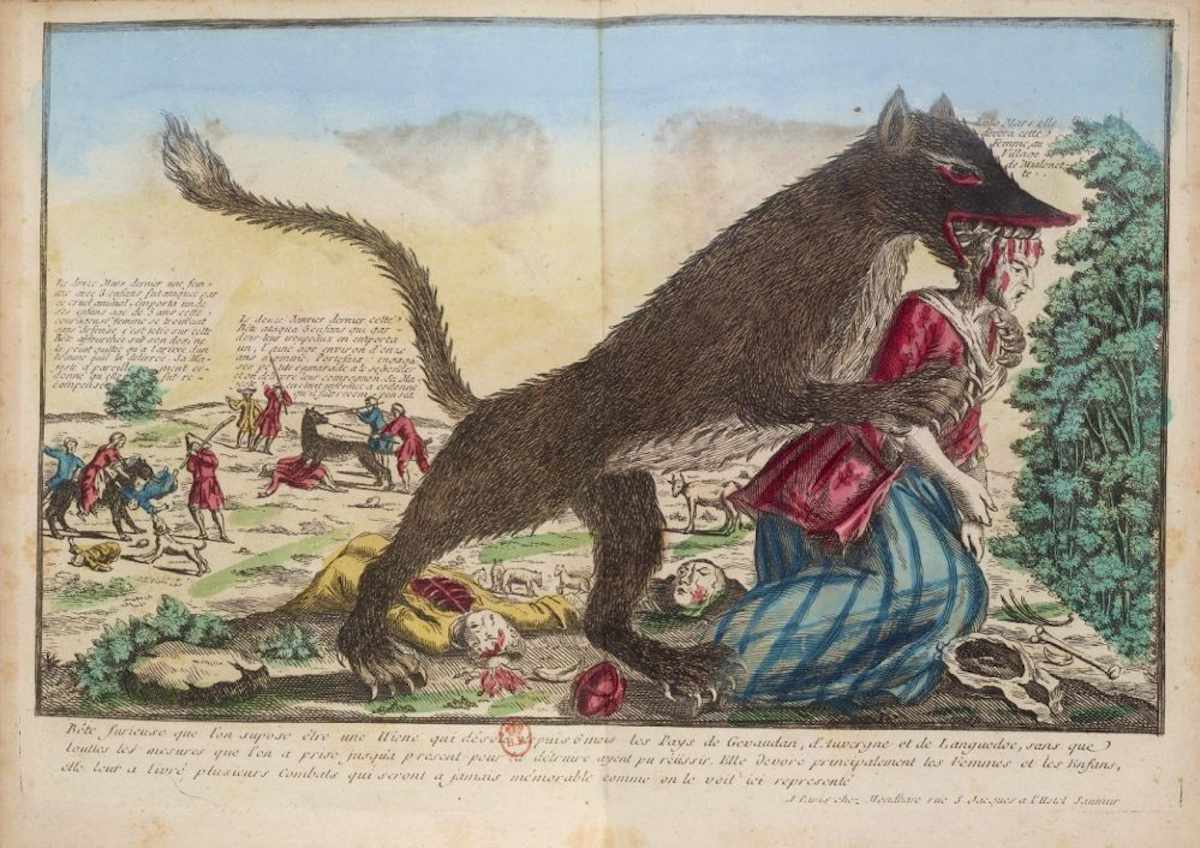In folklore, a werewolf (from Old English werwulf ‘man-wolf’), or occasionally lycanthrope (from Ancient Greek λυκάνθρωπος, lykánthrōpos, ‘wolf-human’), is an individual who can shape-shift into a wolf (or especially in modern film, a therianthropic hybrid wolf-like creature), either purposely or after being placed under a curse or affliction (often a bite or the occasional scratch from another werewolf), with the transformations occurring on the night of a full moon. Early sources for belief in this ability or affliction, called lycanthropy, are Petronius (27–66) and Gervase of Tilbury (1150–1228). The werewolf is a widespread concept in European folklore, existing in many variants, which are related by a common development of a Christian interpretation of underlying European folklore developed during the medieval period. From the early modern period, werewolf beliefs also spread to the New World with colonialism. Belief in werewolves developed in parallel to the belief in witches, in the course of the Late Middle Ages and the early modern period. Like the witchcraft trials as a whole, the trial of supposed werewolves emerged in what is now Switzerland (especially the Valais and Vaud) in the early 15th century and spread throughout Europe in the 16th, peaking in the 17th and subsiding by the 18th century.
| Alias Werewolf |
| Real Names/Alt Names N/A |
| Characteristics Villain, Literary Characters, Werewolf, Shapeshifter, The Renaissance |
| Creators/Key Contributors ○ |
| First Appearance European folklore |
| First Publisher ○ |
| Appearance List Johannes Fridericus Wolfeshusius’ De Lycanthropia: An vere illi, ut fama est, luporum & aliarum bestiarum formis induantur (1591), Claude Prieur’s Dialogue de la Lycanthropie: Ou transformation d’hommes en loups, vulgairement dits loups-garous, et si telle se peut faire (1596), Bourquelot and Jean de Nynauld’s De la Lycanthropie, Transformation et Extase des Sorciers (1615), Montague Summers’ The Werewolf London (1933), Jan de Vries’ Altnordisches Etymologisches Worterbuch (1962) |
| Sample Read How the 18th-Century French Media Stoked a Werewolf Panic [Web] |
| Description In folklore, a werewolf (from Old English werwulf ‘man-wolf’), or occasionally lycanthrope (from Ancient Greek λυκάνθρωπος, lykánthrōpos, ‘wolf-human’), is an individual who can shape-shift into a wolf (or especially in modern film, a therianthropic hybrid wolf-like creature), either purposely or after being placed under a curse or affliction (often a bite or the occasional scratch from another werewolf), with the transformations occurring on the night of a full moon. Early sources for belief in this ability or affliction, called lycanthropy, are Petronius (27–66) and Gervase of Tilbury (1150–1228). The werewolf is a widespread concept in European folklore, existing in many variants, which are related by a common development of a Christian interpretation of underlying European folklore developed during the medieval period. From the early modern period, werewolf beliefs also spread to the New World with colonialism. Belief in werewolves developed in parallel to the belief in witches, in the course of the Late Middle Ages and the early modern period. Like the witchcraft trials as a whole, the trial of supposed werewolves emerged in what is now Switzerland (especially the Valais and Vaud) in the early 15th century and spread throughout Europe in the 16th, peaking in the 17th and subsiding by the 18th century. |
| Source Werewolf – Wikipedia |

